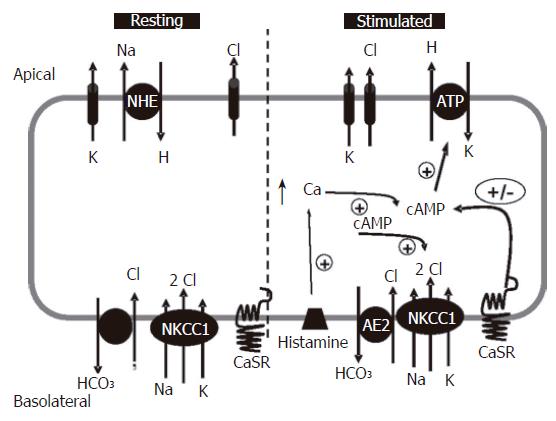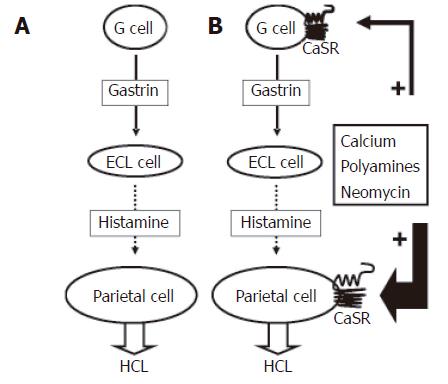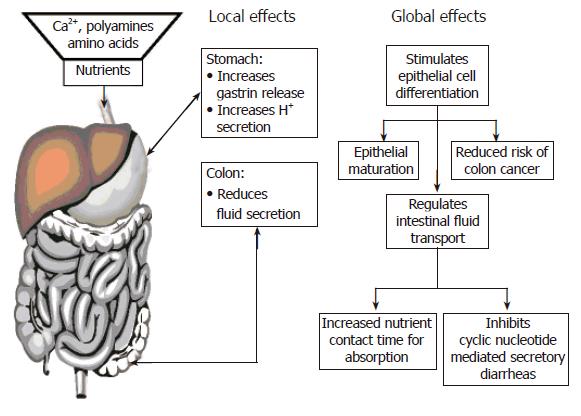Copyright
©2006 Baishideng Publishing Group Co.
World J Gastroenterol. May 28, 2006; 12(20): 3229-3236
Published online May 28, 2006. doi: 10.3748/wjg.v12.i20.3229
Published online May 28, 2006. doi: 10.3748/wjg.v12.i20.3229
Figure 1 Simplified model of the parietal cell showing the current mechanisms involved in acid secretion in comparison to a resting cell.
The Ca2+-sensing receptor (CaSR) and the histamine receptor are located on the basolateral membrane. HCl secretion is mediated by H+ extrusion via the H+,K+-ATPase coupled with Cl- secretion via an apical channel. Activation of the CaSR causes acid secretion via the H+, K+-ATPase.
Figure 2 Schematic of acid secretion.
A: Classically defined pathway of acid secretion: Gastrin released from the G cell binds to receptors on the ECL cell causing histamine release from the ECL cell. The histamine binds to receptors on the parietal cell and stimulates proton efflux; B: Modified model of acid secretion involving a functional CaSR on the basolateral membrane of both the G cell and parietal cell. Acid secretion can be activated directly by the CaSR on the parietal cell or via the G cell pathway.
Figure 3 Cell model of proximal and distal colon.
Shown are the known transport proteins in absence or presence of mineralocorticoid stimulation and their known inhibitors.
Figure 4 Current theory of roles for the Ca2+-sensing receptor (CaSR) in the gastrointestinal tract.
- Citation: Kirchhoff P, Geibel J. Role of calcium and other trace elements in the gastrointestinal physiology. World J Gastroenterol 2006; 12(20): 3229-3236
- URL: https://www.wjgnet.com/1007-9327/full/v12/i20/3229.htm
- DOI: https://dx.doi.org/10.3748/wjg.v12.i20.3229
















